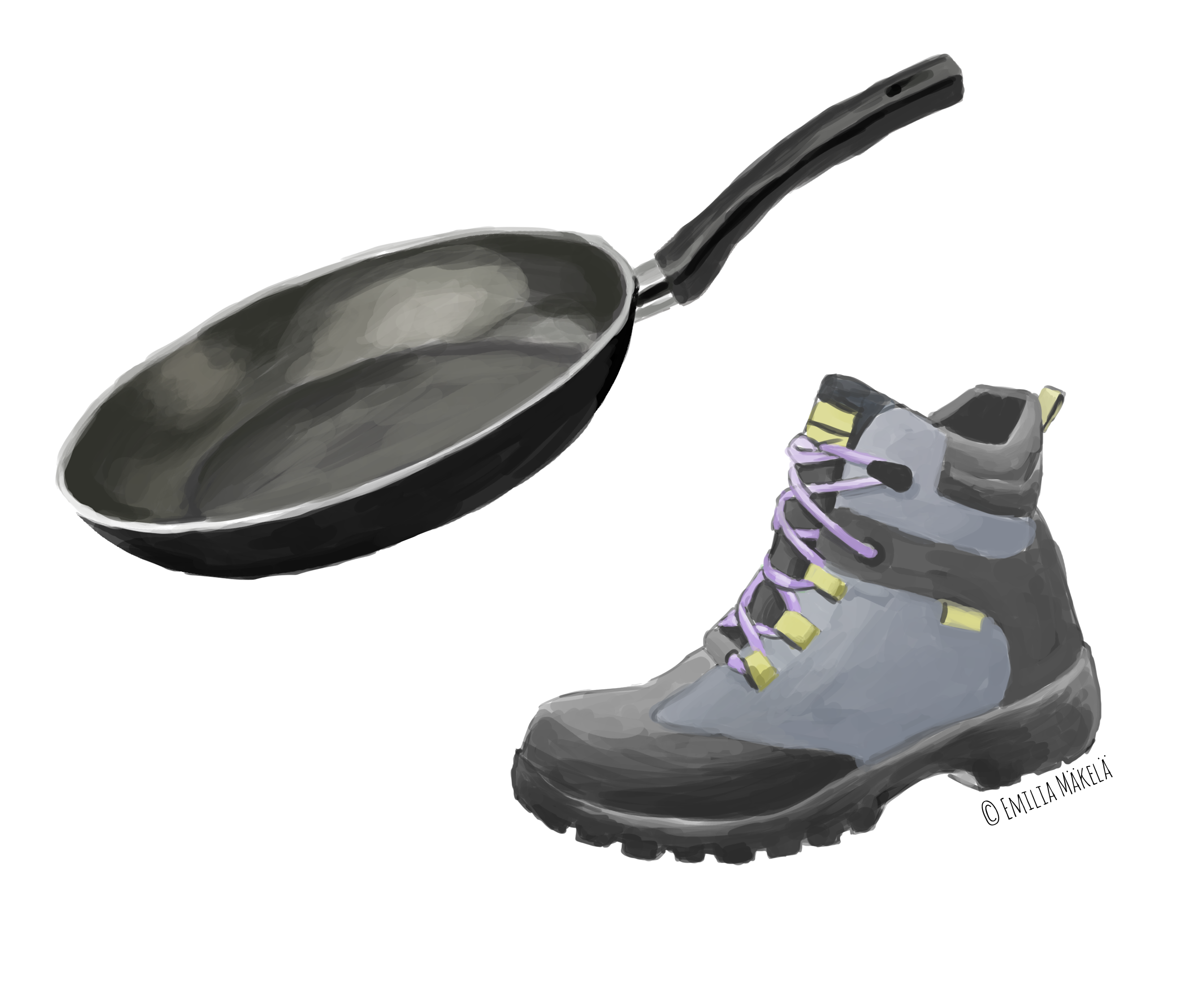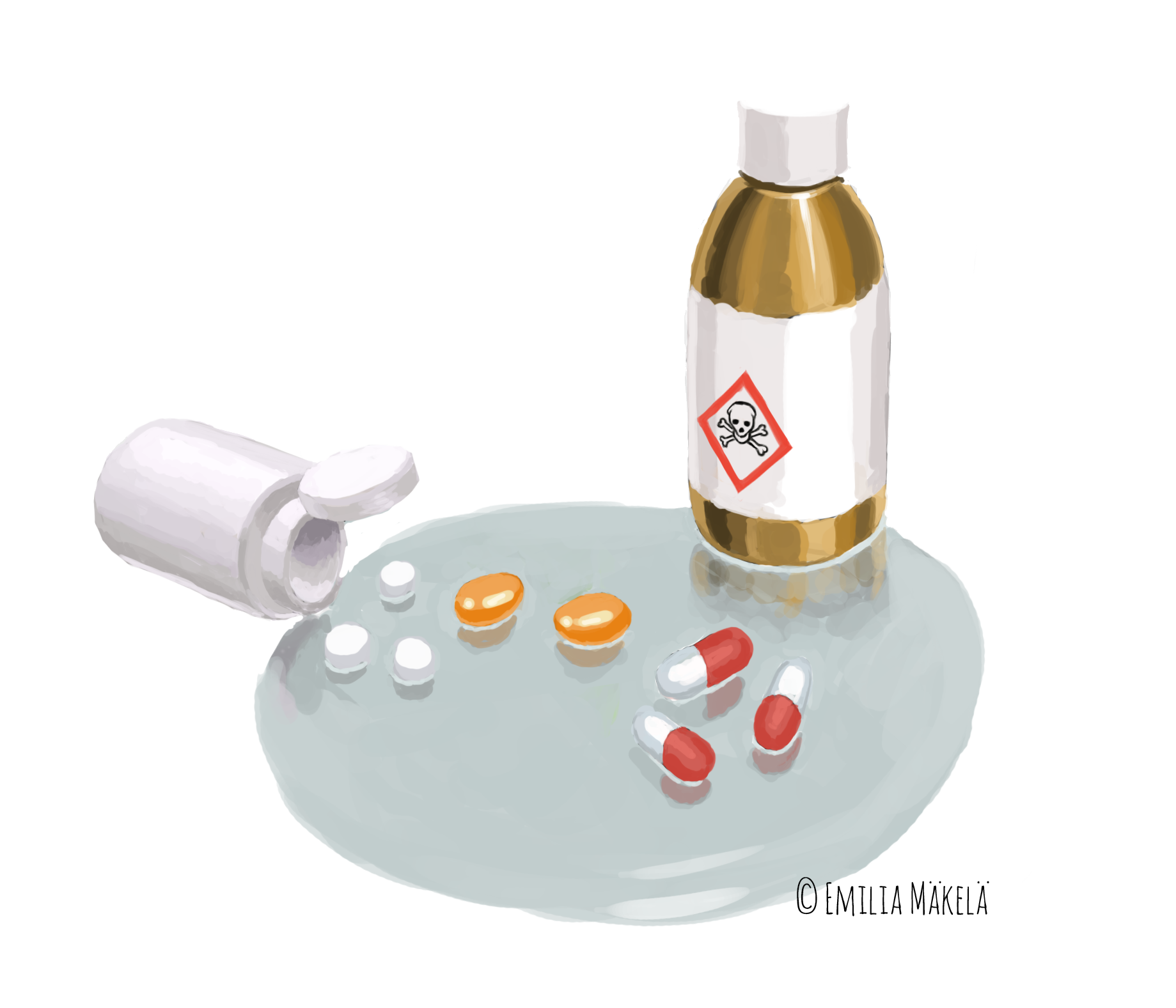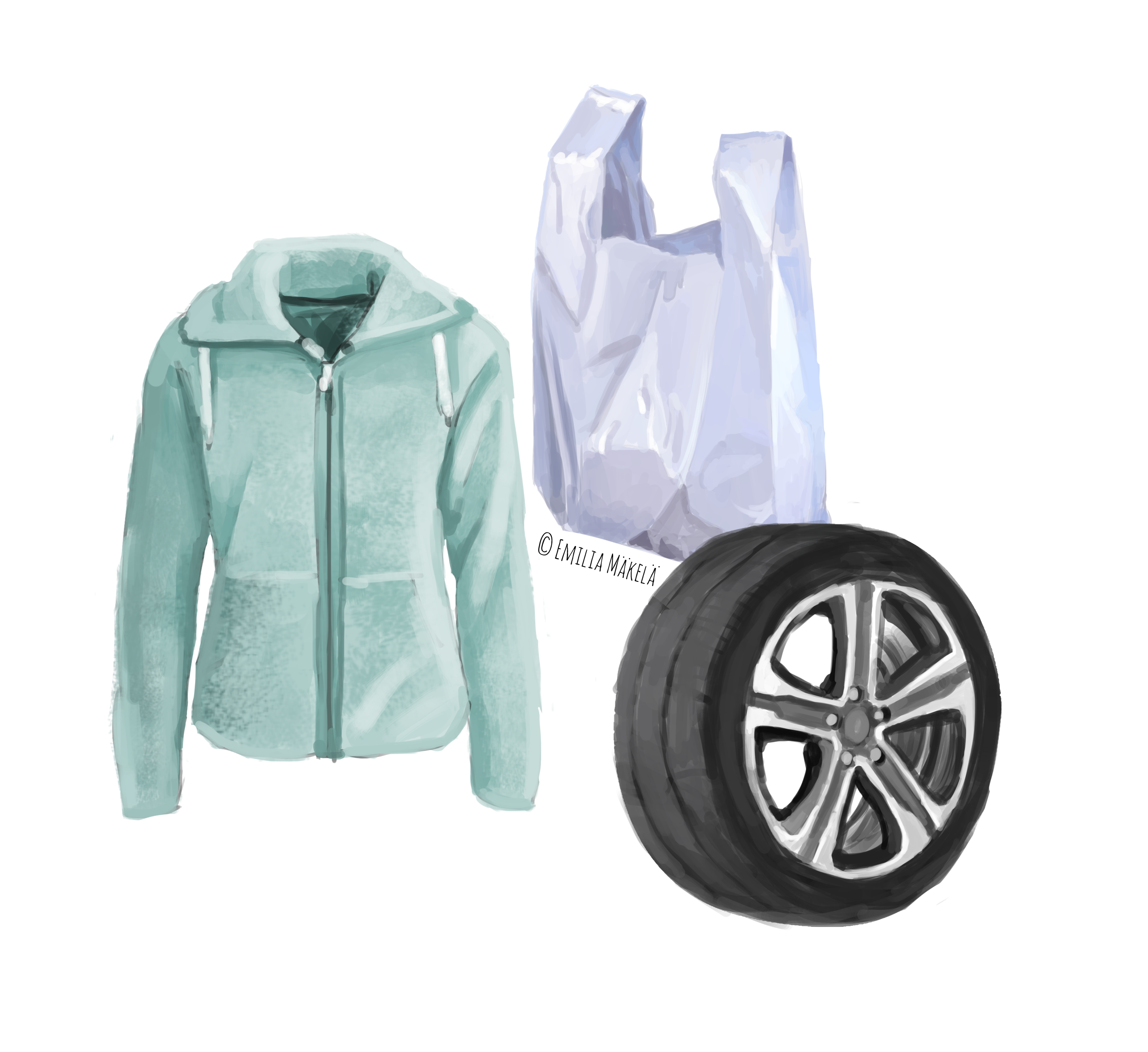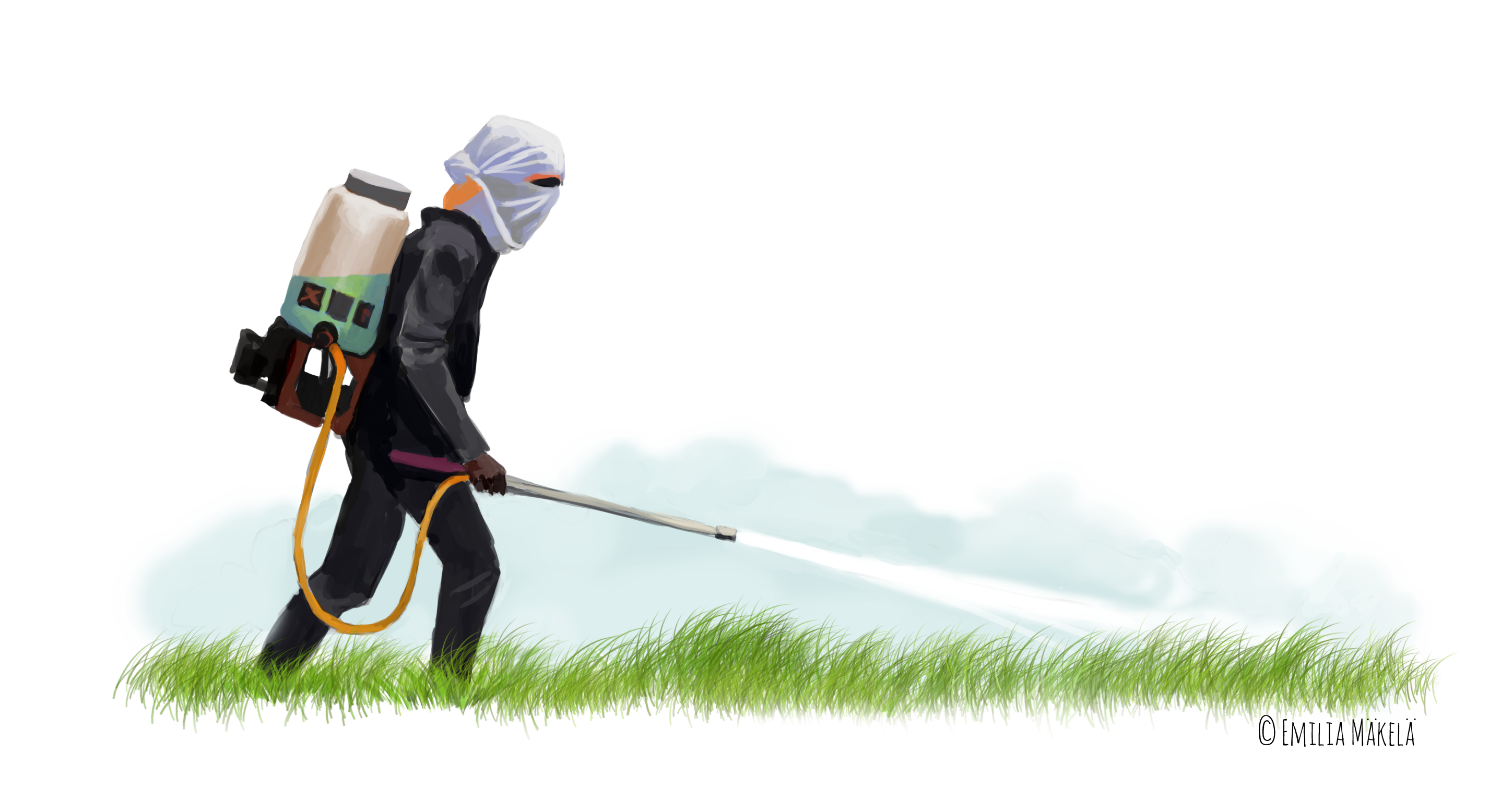Protect yourself and the environment
The group of hazardous substances includes a variety of chemicals with different characteristics causing hazardous effects on the environment and human health. Many of them are very stable, travel long distances in nature and enrich the food chain. It is easier to prevent and reduce the load than clean up the environment. The substances described below were focused on because they are pointed out in the Environmental Quality Standards (EQS) Directive 39/2013/EU and Baltic Sea Action Plan priority substances.

Perfluorinated compounds
- Use stainless steel and cast-iron cookware instead of non-stick products.
- Avoid packages containing grease-repellent coatings (e.g. microwave popcorn bags and pizza boxes).
- Pay attention to fabrics labelled stain- or water-repellent.
- Pay attention to clothes with waterproof layers.
- Avoid personal care products with an ingredients list containing the words “fluoro” or “perfluoro.”
- Read more

Pharmaceuticals
- Do not use the toilet bowl as a trashcan.
- Estonia, Finland, Latvia and Sweden – medicines are collected free of charge; pharmacies have an obligation to accept expired medications.
- More info: Meds Disposal
- Read more

Plastics
- Use less plastics or avoid completely single use plastics (straws, bags, balloons).
- Do not use the toilet bowl as a trashcan.
- Recycle plastic packages and used plastic products.
- Pick up the trashes you find in the environment: plastics can reach to the sea through sewage and storm waters.
- Read more

Pesticides
- Pesticides are chemicals used for destroying weeds, insects, fungal diseases and rodents.
- When using pesticides, either in agriculture or in the garden, follow the instructions carefully.
- Prefer mechanical and biological control in the garden, and organic farming.
- Eat organic food; use of pesticides is strictly controlled in organic farming.
- Peel the non-organic fruits and vegetables to remove most pesticide recidues.
- Read more

